Objective: The purpose of this study is to investigate the benefits of using a nightly icodextrin peritoneal dialysis (PD) solution in a cardiorenal (diuretic-resistant congestive heart failure) patient. Icodextrin is a glucose polymer that has been used as a replacement for the glucose traditionally used in the PD long dwells, as the oncotic pressure gradient can be maintained at adequate ultrafiltration (UF) values for 8-12 hours during sleep. Icodextrin-based solutions (ICO) are well tolerated, lack the metabolic side effects of glucose, and enhance the clearance of small and middle-sized molecules as a consequence of increased convective flow. Patients using one exchange nightly lead a more “normal” life when compared to patients using continuous cycling peritoneal dialysis (CCPD) with glucose solutions, as CCPD requires a nightly cycler apparatus which restricts the patient ability to ambulate at night.
Design: This study provides data from a sample size of 16 individuals (12 males and 4 females), 12 of whom are using once-nightly icodextrin peritoneal dialysis, three patients are using continuous cycling peritoneal dialysis, and one patient who is a combination of both - a hybrid. Hospital admissions over an equal date range before and after starting extraneal dialysis treatment were compared. Additionally, a ‘Quality of Life’ questionnaire was made using ‘Kidney Disease Quality of Life SF-36’, and other factors affecting that could affect a patient’s quality of life.
Results: In our study, we observed that patients using once-nightly icodextrin exchange had fewer hospitalizations (p=0.0149) and reported an overall better quality of life(p=0.009) after initiation of icodextrin peritoneal dialysis with decreased hospital admissions for CHF and progressive chronic kidney disease.
Conclusions: By augmenting UF in the cardiorenal patient with recurrent episodes of decompensated heart failure through once-nightly icodextrin exchanges, patients receive adequate clearance with preserved residual renal function as well as fewer hospitalizations. In addition, patients report more restful sleep and a better quality of life as a result of not being attached to a machine at night. They also enjoy being able to travel with their solutions delivered to their destination without having to carry a cycler.
icodextrin, residual renal function, cardiorenal syndrome, diuretic-resistant CHF, quality of life
End Stage Renal Disease (ESRD) is a debilitating disease that leaves patients with a negative impact in many different areas of their life. These aspects include recurrent hospitalizations, and lamentable mental, physical, and emotional health. These changes ultimately lead to a lower standard for overall quality of life. Our motto is “you need dialysis to live, but you don’t need to live for dialysis”.
Icodextrin Peritoneal Dialysis (PD) aids in improving creatinine and BUN values compared to a simple dextrose solution. Icodextrin is only administered as an aseptic intraperitoneal method. The icodextrin solution is absorbed from the peritoneum in a linear pattern in about a 10-12-hour period. A known fact is that membranes do not like change in osmolality. Icodextrin is absorbed slowly and continuously since the osmolality of the solution is the same as our body, allowing the membrane gradient to stay equal [1,2].
Icodextrin peritoneal dialysis is contraindicated in patients who have a known allergy to cornstarch/icodextrin, display maltose/isomaltose intolerance, as well as for patients with glycogen storage diseases and severe lactic acidosis.
Icodextrin is submerged into the peritoneal cavity. Using the lymphatic pathway, icodextrin solution enters the intravascular compartment. It is then metabolized by amylase into maltose - an oligosaccharide. Maltose is able to enter the intravascular compartment, and using maltase is converted to glucose. Due to the osmolality of the solution equaling our body, steady states were able to be obtained within a week of initiating the treatment [3,4] (Figure 1).
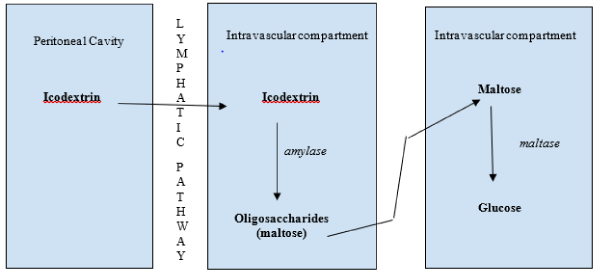
Figure 1. Pathway showing conversion of icodextrin to glucose
Icodextrin Peritoneal Dialysis (PD) has given patients the ability to lead a “normal” life by being able to work, spend time with family, travel, and have a more autonomy with their diet and fluid intake.
We present a study that provides data from a sample size of 16 individuals (12 males and 4 females), 12 of whom are using once-nightly icodextrin peritoneal dialysis, three patients are using continuous cycling peritoneal dialysis, and one patient who is both - a hybrid. Data was collected using a ‘Quality Of Life’ questionnaire, that was made with references to “Kidney Disease Quality of Life SF-36” [5], and other factors affecting the patients quality of life [6,7]. We chose patients who were on Icodextrin Peritoneal Dialysis or patients who are using Continuous Cycler Peritoneal Dialysis, for at least four months before the study began. This time frame allowed us to have more accurate responses as the patients have had adequate time for adjustment in order to assess their own quality of life. We compared the overall quality of life of patients before and after starting PD, as well as the quality of life of the patients who are Icodextrin exchange vs cycler. Other aspects of the study recorded are hospital admissions before and after PD, net ultrafiltration, along with quality of sleep and mental health.
Statistical analysis
Survey data obtained in our experiment was analyzed using a Paired t-test. The t-statistic was calculated using the following formula:
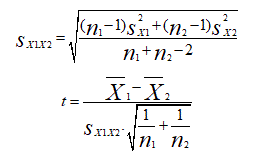
Where t is the t-statistic, X1 is the average survey response prior to treatment, X2 is the average survey response following treatment, n1 is the number of individuals who responded prior to treatment, n2 is the number of individuals who responded following treatment, s1 is the standard deviation of the pre-treatment responses, and s2 is the standard deviation of the post-survey responses. Degrees of freedom were then calculated using the following formula for each analysis:

Critical value was then determined for a two-tailed test with an alpha level of 0.05 using a t-Table. All absolute values of the t-statistic that were larger than the critical value for that analysis were considered significant.
The study is sufficiently powered. Using a standard alpha error level of 0.05 corresponding to a 95% confidence interval, the statistical power is determined to be 97.5% with a sample average of 3.178 compared to a test value of 4.125, sample size of 16, and standard deviation of 1.05.
The study included a total of 16 participants, 12 of whom are using icodextrin peritoneal dialysis, three patients are using continuous cycling peritoneal dialysis, and one patient who is both - a hybrid. The average score of all of the participating patients for quality of life was found to be 2.3 (range 0-5) before beginning PD, and saw a statistically significant increase to a score of 3.7 (p=0.013). Patients using once-nightly icodextrin exchange had fewer hospitalizations as well. Before beginning therapy there was a total of 26 hospitalizations, and since there have only been 8, 3 of which are related to Kidney Disease (p=0.0149). Patients report that a statistically significant improvement of symptoms such as cramping (p=0.0068), itchy skin (p=0.010), shortness of breath (p=0.041), and mood (p=0.010) (Figure 2). Other parameters measured included social wellbeing, body pain, dizziness, and energy also showed improvements, though not very statistically significant (Figure 3).
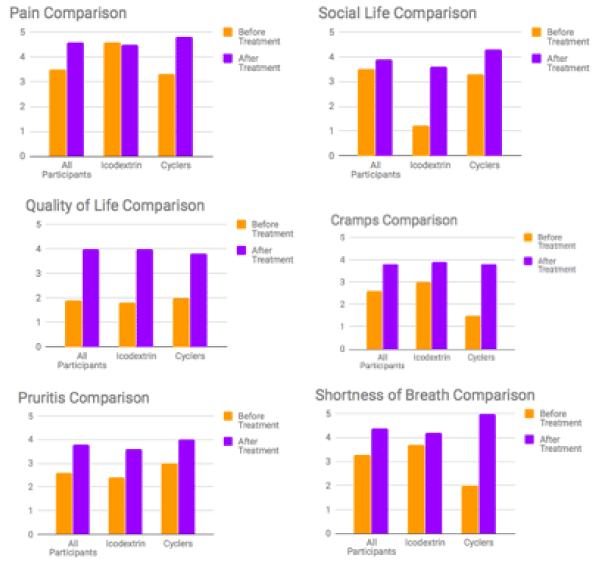
Figure 2. Comparison of physical and psychosocial health parameters before and after treatment
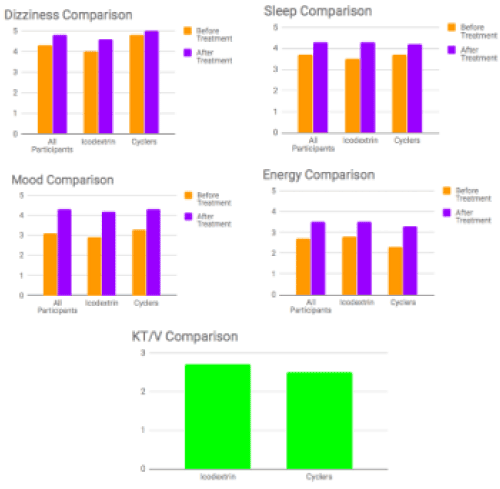
Figure 3. Comparison of other parameters before and after treatment
ESRD patients need dialysis to survive. Options include either peritoneal or hemodialysis. Both types of dialysis have an impact on the quality of life that isn’t just significant to the patient himself/herself, but to his/her caretaker as well. Keeping the idea of improved QOL in mind, the results of our study show that being on peritoneal dialysis has significantly improved the physical and psychosocial health of our patients, compared to HD or cycler. Additionally, we were able to keep majority of our patients out of the hospital [8]. Our goal is to allow our patients to live their best life.
In our study, the most common patient complaints before PD were shortness of breath, itchy skin, cramping, decreased sleep, and dietary restrictions. After starting peritoneal dialysis, our patients had decreased symptoms in the above-mentioned areas, as well as, in bodily pain and dizziness.
Patients rated higher on social wellbeing and energy. To conclude, the patients reported a higher quality of life by being on peritoneal dialysis.
In our group of 16 patients, 12 of whom are using once-nightly icodextrin peritoneal dialysis, three patients are using continuous cycling peritoneal dialysis, and one patient who is both - a hybrid. When comparing the quality of life between these two groups, it was found that the patients using the icodextrin exchange reported greater improvement on their quality of life than those who are using the continuous cycling peritoneal dialysis [9]. Participants using icodextrin exchange had an easier time managing their treatment during travel, which was a factor for many patients. The ability to travel had become farfetched for many patients, but now it is a possibility. Many patients also voiced that icodextrin exchanges improved their work life. We have a few patients who need to travel for work and are able to do so by packing their solution bag in their luggage. Other patients report that being on icodextrin exchanges has let them continue to perform their duties at their job as if they are “not dealing with any kind of disease”. The reason being that they are not “hooked up on a machine” and have better control over their life.
Patients on icodextrin exchange, along with their significant others who share the bed, reported more rested sleep than the patients on the continuous cycler due to lack of machinery noises from the cycler. One particular patient in our study began dialysis with icodextrin but had to switch to HD due to a gunshot wound. Patient reported feeling like he had “walked out a 12-boxing match after HD”. The patient was able to transition to cycler after some time. However, he voiced his opinion strongly on his liking and better QOL during his time in icodextrin PD.
Another unique patient, who has been a Type 1 diabetic since the age of seven, knew that one day he would need dialysis. When it was time, the patient was started on HD. The patient said he was always in a bad mood because he was always “tired, wiped out, and felt like a dishrag after the treatment was done”. When he transitioned to icodextrin PD, he wondered why that option was not presented to him in the beginning. He had learned that icodextrin PD is a very common procedure in Europe and questioned why it was not that accessible in the United States. He said that if he had the chance to talk to anyone who was on icodextrin PD, he would have chosen that path from the beginning.
We have another patient who is a train conductor and is on both icodextrin PD and the cycler. Since he is unable to take his cycler with him on the train, he does the icodextrin PD. In his opinion, “Icodextrin is less harsh on the peritoneal cavity” and rated Icodextrin much superior than cycler.
Patients who are on icodextrin exchanges, have been receiving adequate clearance with preserved residual renal function. Preserving residual renal function is a goal of the treatment of all dialysis patients and extraneal peritoneal dialysis is a great choice for hyper-initial therapy. The goal is to have the KT/V value above 1.7. All of our patients surpassed that minimum, proving good clearance, which in turn resulted in less hospitalizations needed [10] (Figure 4).
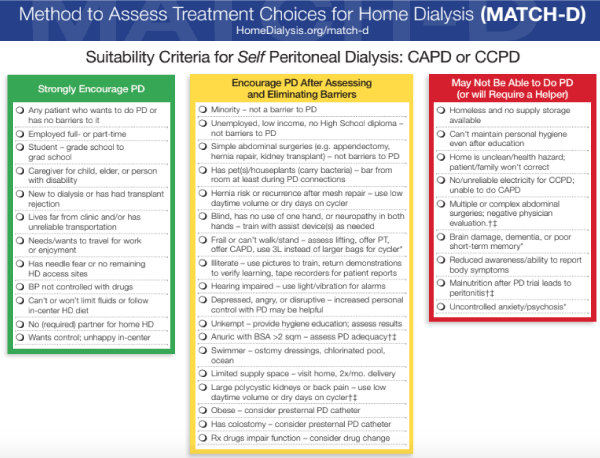
Figure 4. Method to access treatment choices for home dialysis (MATCH-D)
Insulin-dependent diabetic patients would have to monitor their sugar levels and modify their insulin dosage accordingly. As with any other treatment, electrolytes and blood chemistry should also be monitored in a timely fashion.
Hyponatremia was reported in some patients. This is believed to be a dilutional - osmotic effect [11].
Patients who suffer from pancreatitis were noticed to have decreased amylase in lab because amylase is used for breaking icodextrin giving false negative results. For these patients, lipase can be used instead as an alternative.
Shortness of breath, or abdominal distention can occur due to over infusion of the peritoneal dialysis solution. In this scenario, draining the peritoneal solution is curative.
Most common adverse effect is a rash at the site of insertion. It is easily treated with topical antibiotics. It can also be prevented with prophylactic antibiotics like vancomycin and nystatin. Other common adverse effects include peritonitis, upper respiratory infection and these can also easily be treated using antibiotics.
Hypersensitivity reactions such as TEN, angioedema, serum sickness, erythema multiforme and vasculitis can occur. This, however, is due to concept of peritoneal dialysis and not especially due to icodextrin solution peritoneal dialysis.
A potentially fatal, but very rare, complication of peritoneal dialysis is known as encapsulating peritoneal sclerosis (EPS) where there can be an obstruction in the bowel due to the growth of a thick fibrin later within the peritoneum (Table 1).
Table 1: Pros and cons of icodextrin exchange.
Pros |
Cons |
Better Maintenance of Residual Renal Function |
Daily nocturnal treatment |
Good clearance of solutes (ultrafiltration) |
Weight gain |
Can be done anywhere |
Errors in techniques |
Restful Sleep for patient and his/her partner |
Unable to swim |
Ability to travel |
Increased risk of infection (rash, peritonitis) |
No machines or needles attached |
Storage room needed for supplies |
Greater flexibility with diet |
|
Minimize disruption of daily activities due to nocturnal treatments |
|
Improved Mood |
|
Higher energy |
|
Control over their own bodies |
|
Lack of dependence on caregiver/family |
|
Our findings suggest that icodextrin is an encouraging solution for patients on PD to reach their treatment goals, such as preserving residual urine function [12,13] and managing fluid balance. Managing fluid for patients on PD is a fundamental aspect of the treatment, as it is associated with many comorbidities such as congestive heart failure and hypertension. It also plays a role in the quality of life of the patient, as keeping the patients euvolemic will decrease shortness of breath and edema, which will lead to decreased hospitalizations and be in PD patients. A crucial component to PD is the preservation of residual renal function, as losing kidney function can predict mortality, and using icodextrin solution can aid in the preservation of residual renal function.
By augmenting UF in the cardiorenal patient with recurrent episodes of decompensated heart failure through once-nightly icodextrin exchanges, patients receive adequate clearance with preserved residual renal function as well as fewer hospitalizations. In addition, patients report more restful sleep and a better quality of life as a result of not being attached to a machine at night. They also enjoy being able to travel with their solutions delivered to their destination without having to carry a cycler.
None
- Advanced Renal Care Educational Program
- https://www.mayoclinic.org/tests-procedures/peritoneal-dialysis/about/pac-20384725
- Peritoneal Dialysis Adequacy Work Group (2006) Clinical practice recommendations for peritoneal dialysis adequacy. Am J Kidney Dis 48: S130-S158.
- Lameire N, Van Biesen W (2001) Importance of blood pressure and volume control in peritoneal dialysis patients. Perit Dial Int 21: 206-211. [Crossref]
- Gerasimoula K, Lefkothea L, Maria L, Victoria A, Paraskevi T, et al. (2015) Quality of life in hemodylaysis patients. Mater Sociomed 27: 305-309.
- Sathvik BS, Parthasarathi G, Narahari MG, Gurudev KC (2008) An assessment of the quality of life in hemodialysis patients using the WHOQOL-BREF questionnaire. B. Indian J Nephrol 18: 141–149.
- https://www.rand.org/content/dam/rand/www/external/health/surveys_tools/kdqol/kdqol36.pdf
- Dabrowska-Bender M, Dykowska G, Zuk W, Milewska M, Staniszewska A (2018) The impact on quality of life of dialysis patients with renal insufficiency. Patient Prefer Adherence 12: 577-583.
- Jankowska-Polańska B, Uchmanowicz I, Wysocka A, Uchmanowicz B, Lomper K, et al. (2017) Factors affecting the quality of life of chronic dialysis patients. Eur J Public Health 27: 262-267.
- https://homedialysis.org/documents/pros/MATCH-D-v4.pdf
- Lameire N, Van Biesen W (2004) Hypervolemia in peritoneal dialysis patients. J Nephrol 17: S58-S66. [Crossref]
- Wang AY, Lai KN (2006) The importance of residual renal function in dialysis patients. Kidney Int 69: 1726-1732. [Crossref]
- Marron B, Remon C, Perez-Fontan M, Quirós P, Ortíz A (2008) Benefits of preserving residual renal function in peritoneal dialysis. Kidney Int 73: S42-S51.






